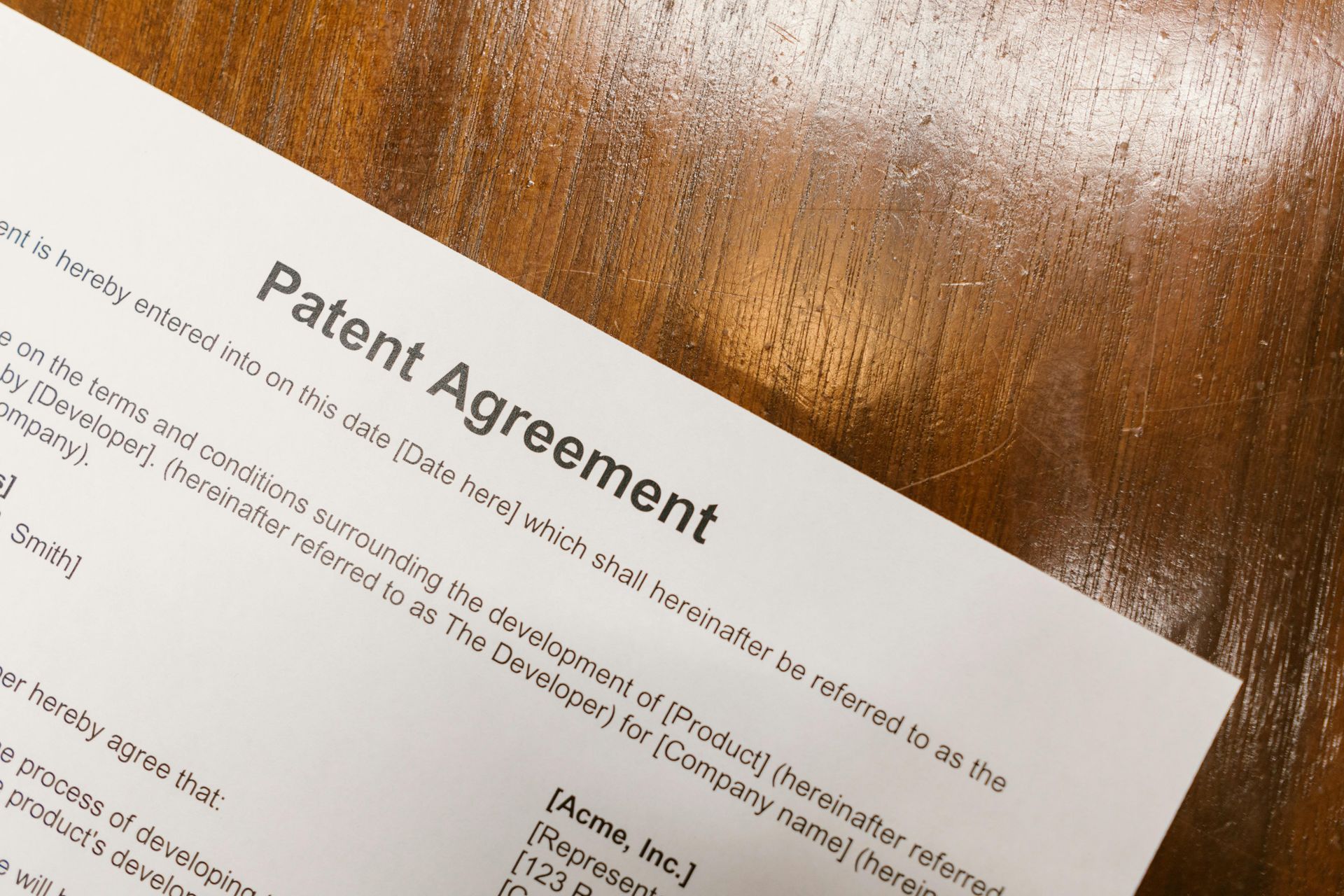Filing a Provisional Patent: Practical Steps for Manufacturers
Getting a head start on protecting innovative products can make all the difference for manufacturers in medical devices, auto parts, construction tools, wheelchair technology, and military equipment. Filing a provisional patent is a smart move for teams racing against the clock to secure new ideas before sharing them with partners or the public. This quick initial step helps you lock in an early filing date, giving your company peace of mind as you develop and test your invention.
The biggest advantage? Provisional patents let you claim "patent pending" fast, which can deter competitors and buy time for perfecting your product. Early filing is especially useful when product cycles keep getting shorter and the pressure to deliver new solutions is always on. If you want to learn more about how to secure your idea before a full patent, check out this guide on Protecting Your Invention Early.
What is a Provisional Patent and Why File One?
Filing a provisional patent gives manufacturers and innovators a way to protect ideas quickly. This type of patent application is simpler, cheaper, and faster than a non-provisional (full) patent. Instead of spending months on paperwork and thousands of dollars upfront, you can file a provisional patent in just a few days. Once it's filed, you get a "patent pending" status—a crucial layer of protection when you're sharing prototypes, seeking investors, or gearing up for product launches.
 Photo by RDNE Stock project
Photo by RDNE Stock project
Key Benefits for Manufacturers and Innovators
Industries like medical devices and automobile parts move at lightning speed. Filing a provisional patent can help your team keep up by giving a head start without huge upfront costs or delays.
Here are some top reasons manufacturers and innovators choose a provisional patent:
- Earlier Priority Date: The moment you file, you lock in your invention’s filing date. This is critical if you expect others to file similar ideas soon. In most countries, patents go to the first inventor to file, not necessarily the first to invent.
- Confidentiality is Preserved: You do not need to immediately disclose all design details to the public. Your invention remains under wraps until you’re ready to share more, letting you test, pitch, and improve your product without fear of leaks or copycats.
- Flexibility to Improve: A provisional patent buys you 12 months to refine your invention before filing for a full patent. This time can be spent completing product development, gathering market feedback, or raising funds.
- Lower Costs: Filing a provisional patent is much more affordable compared to a full patent. Many use this option to delay major expenses while protecting initial work. For more on costs and how to budget for patent protection, see the section on the cost of patenting an invention.
- "Patent Pending" Status: This status signals to competitors and industry players that your idea is officially in progress for patent protection. It can make a difference in partnerships, licensing deals, and even investor conversations. According to Investopedia , having a pending patent can deter potential copycats during crucial early stages.
Limitations and What a Provisional Patent Does Not Cover
A provisional patent is not a shortcut to a granted patent. It is important to understand what it can and cannot do so nobody is surprised down the line.
Here’s what a provisional patent does not provide:
- No Legal Enforcement Rights: A provisional patent does not give you the power to stop others from making, using, or selling your invention. For that, you must follow up with a non-provisional (utility) patent application within 12 months.
- No Patent is Granted: Filing a provisional patent does not result in an issued patent by itself. Think of it as planting a flag, giving you a set window to proceed.
- No Formal Examination: The U.S. Patent and Trademark Office (USPTO) does not review provisional applications for merit, completeness, or patentability. You’re responsible for ensuring your application describes your invention well enough to support your future full patent.
- Limited Time Coverage: After 12 months, it expires. If you haven’t filed a non-provisional application by then, you lose the earlier filing date and potential protection.
The provisional option sets real expectations: it’s a quick, confidential way to stake a claim while buying time to make your product shine. If you want to explore how others use provisional filings and weigh pros and cons, you may want to look at this comprehensive guide by Pillsbury Law.
Step-by-Step Guide to Filing a Provisional Patent
Securing innovation begins with the right preparation and an understanding of the filing process. Following a clear path can help you avoid setbacks, speed up development, and make the most of your provisional patent window. This section breaks down best practices and explains what happens after your application is filed.
Best Practices for Preparing Your Application
 Photo by Cytonn Photography
Photo by Cytonn Photography
Filing a provisional patent takes more than filling out forms—it’s about documenting your invention with care. Whether you’re in medical device production or building military equipment, how you present your idea can impact whether you protect it successfully.
Key steps to take before filing:
- Gather evidence: Keep organized records showing when and how you developed your invention, such as drawings, prototypes, emails, and lab notes.
- Write clear technical descriptions: Use simple, straightforward words. Explain how your invention works, its benefits, and any unique steps, processes, or materials involved.
- Include supporting materials: Add labeled diagrams, design sketches, test results, or technical data. These visuals make your idea easy to understand and help fill in any gaps.
Avoid common errors that slow down the process:
- Leaving out vital details or relying too much on legal jargon.
- Skipping a technical illustration or unclear labeling of parts.
- Rushing the description for speed—be complete to avoid gaps that could later weaken your protection.
Manufacturers in high-compliance industries (especially in medical devices) need to be extra diligent:
- Document any regulatory benchmarks or standards met by your invention.
- Save records of clinical data, quality tests, and compliance reviews.
- Avoid broad, general descriptions—precision matters if your product will face FDA or other regulatory review.
If you’re unsure how to create a strong filing, getting support from a seasoned intellectual property professional is worth considering. Firms offering patent services can coach you through the process, check your drafts, and flag issues before they become problems.
Timeline and What Happens After Filing
When you finish filing a provisional patent, you lock in your priority date but you’re not finished. A 12-month clock starts. During this window, you’re “patent pending,” which opens up strategic options for moving your project forward.
Here’s what companies often do during this period:
- Develop and refine the product based on lab results, customer feedback, or field tests.
- Explore funding opportunities: Use your “patent pending” status to support pitches to investors, grant applications, and early partnership discussions.
- Market test your idea in select regions or with pilot programs, building evidence of demand or improving features before the final patent filing.
It's essential to use the full 12 months wisely. Near the end of this period, you'll need to file a non-provisional (utility) patent if you want ongoing protection. Miss the deadline, and you lose your early advantage.
Want to get more real-world details about what happens after you file? Listening to Milano IP podcast episodes can give extra guidance on timing and next steps for medical device and product-focused teams.
Being organized and proactive during your 12-month provisional period helps you squeeze the most value out of your early filing—whether you’re testing a new wheelchair design, prepping a tool for military use, or rolling out the next must-have gadget.
Costs and Strategic Considerations Before Filing
Filing a provisional patent sounds straightforward, but there are key costs and strategy choices that every manufacturer should weigh before moving forward. The right approach can prevent wasted money and missed opportunity, especially for teams juggling tight budgets and active research pipelines.
Budgeting and Return on Investment for R&D Departments

Photo by RDNE Stock project
Filing a provisional patent isn’t free, but the costs are lower than a full application, which explains why many R&D departments see it as a smart first step. Here’s the catch: affordable up front doesn’t always mean it’s the best financial move for every new idea on the drawing board.
Think about your innovation pipeline. If your team runs multiple projects at once, you need a clear process to decide which inventions deserve that early “patent pending” status. Spending a little on every project can add up fast—especially when just a few might survive the market test phase.
Key factors to consider when budgeting and prioritizing:
- Direct costs : USPTO fees for filing a provisional patent range from $60–$300 for most businesses, but that doesn’t count attorney time or technical help. Some inventors prepare filings on their own, but quality matters. Average all-in costs (with legal guidance) can reach $2,000–$3,000. For specifics, the article on provisional patent costs and filing tips lays out the typical expenses.
- Attorney and support fees : If the invention is complex (like a new medical device or military component), a specialized patent attorney helps prevent costly mistakes. To keep your budget in check while still protecting your work, see this guide to find the right patent lawyer.
- Total project investment : Consider not just the patent filing costs, but also the resources committed to product development, testing, and regulatory clearances. Filing too many provisionals for products unlikely to launch can stretch budgets thin.
- ROI calculation : Prioritize ideas that align with major business goals or fill a gap in the market. Ask: will filing a provisional give you a real competitive edge? Will it help you secure funding, lock in customers, or partner with distributors? Think of your patent budget like insurance for your most promising R&D bets.
R&D managers for medical device companies, auto parts makers, and complex tool manufacturers often track success by the ratio of patents granted to products launched. Filing a provisional patent at the right moment can boost that success rate, keeping teams focused on ideas that have staying power.
Manufacturers facing regulatory demands or long development cycles often file provisional patents early to get a head start, but timing matters. Avoid rushing every new concept through the process. Compare each project’s progress and potential return before committing. A good practice is to develop an internal checklist for filing decisions, which includes evaluating compliance milestones, prototype success, and market fit.
If you're dealing with several promising leads and limited resources, talking with a patent attorney can help make the numbers work. See how teaming up with experienced professionals can impact your cost structure by reading about Philadelphia Patent Law Services.
When budget is tight, even small savings count. Some find success in phasing their filing strategy: only file provisional patents for those projects that reach key technical or clinical milestones. Protect your team’s hard work, but keep your eyes on which ideas justify the investment. For more on how patent law firms set fees for filings and support, check the Best Patent Attorney in Philadelphia.
Choosing when and what to file shapes not only your budget, but your odds of success in crowded, competitive sectors. Make each provisional count by linking it to a thoughtful plan for innovation and growth.
Common Mistakes and How to Avoid Them
Even skilled product teams can slip up when filing a provisional patent, especially under a tight deadline or with complex regulations in play. Overlooking small details or skipping a step might seem harmless at first, but it can leave your innovation exposed. By understanding the most common errors, you not only make your filing stronger but also save your company extra costs or delays later. Medical, military, and other tightly regulated industries face their own unique pitfalls when it comes to patents.
Pitfalls Unique to Regulated Industries: Highlight Common Mistakes Made by Manufacturers in Regulated Fields Like Medical or Military Device Development
 Photo by Robert So
Photo by Robert So
Filing a provisional patent in industries like medical and military devices is not just about protecting an idea—it's about tracking compliance, documentation, and future proofing your entire R&D pipeline. Here’s where manufacturers most often run afoul:
1. Incomplete Technical Disclosure.
Many teams rush to file and leave out technical features or alternative versions specific to regulatory approval. For regulated products, missing details could mean you can’t later cover improved designs or product variations.
- Capture every critical function, use case, and possible configuration in your provisional filing.
- Don't forget to include process steps or methods that might affect your path through FDA or military review.
2. Lacking Specific Regulatory References or Claimed Standards.
If your device is designed around meeting a certain standard—FDA, ISO, or military specs—mentioning these in your application increases its value. Failing to document compliance testing, approval pathways, or clinical trial milestones can leave gaps that weaken your patent family later.
3. Ignoring the One-Year Deadline for Conversion.
Regulated products often have longer R&D and testing cycles. If you file a provisional but don’t sync your conversion plan with regulatory approvals, you may lose the right to protection before you’re ready for market.
- Track all filing dates to avoid missing your 12-month window to file for a non-provisional patent.
- If your regulatory process takes longer, build this into your patent filing road map from day one. For more on timelines and strategies, this article on navigating provisional patents in biotech and medtech explains the unique pressures in life sciences.
4. Skipping Consultation with Specialist Patent Attorneys.
General legal advice isn’t enough for patents in complex or high-stakes markets. Work with IP experts who know the regulatory rules in your industry.
- Mistakes in how you word your claims or support documents can cost you millions later on, especially if rival patents surface during regulatory review.
- If you need extra help, consider trusted firms offering focused patent services for regulated industries.
5. Not Describing Alternative Embodiments or Use Cases.
Products needing regulatory approval often go through multiple versions as feedback comes in. If your provisional patent is too narrow, later improvements may fall outside your claims.
- Be sure to describe every foreseeable application and variant. This is especially true for devices where a single tweak (like a size change or upgraded material) shifts compliance status.
- Learn more about this by reading about the top mistakes inventors make with provisional patent apps.
6. Overlooking Confidentiality Requirements.
Sharing prototypes or trial data during clinical or military reviews can open the door to public disclosures. If the details go public before a full patent is filed, you risk losing protection in many countries.
- Always tie your development milestones to your patent filing strategy.
- Make sure everyone on the project knows not to publish or present details before legal review.
Avoiding the most common mistakes doesn't guarantee a granted patent, but it puts your best work on solid legal ground from the start. Manufacturers who put care into every detail—especially those specific to regulated industries—turn their pipeline into a long-term competitive advantage. For extra pointers on common errors, the Mistakes to Avoid in Provisional Patent Applications post is a helpful read for innovators in any field.
Conclusion
Filing a provisional patent is a smart step for manufacturers looking to protect new technology in a crowded marketplace. With a quick and affordable process, you secure an early filing date and "patent pending" status while you refine your invention or pitch it to partners. Acting early can give your business a real edge, especially in fields where timing and confidentiality matter most.
The right help can make a difference. Working with professionals who understand both patents and industry regulations saves time and headaches. If you want to see how legal support can strengthen your strategy, read about the advantages of hiring a patent lawyer in Philadelphia.
Get ahead of the competition. Take steps now to protect your ideas and lay the groundwork for market success. Thanks for reading—if you have questions or want to learn more, explore related topics and let us know how we can help.
Get a Free Case Evaluation




